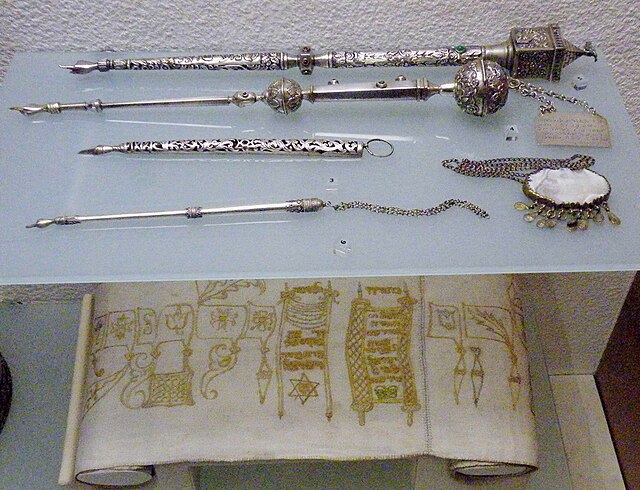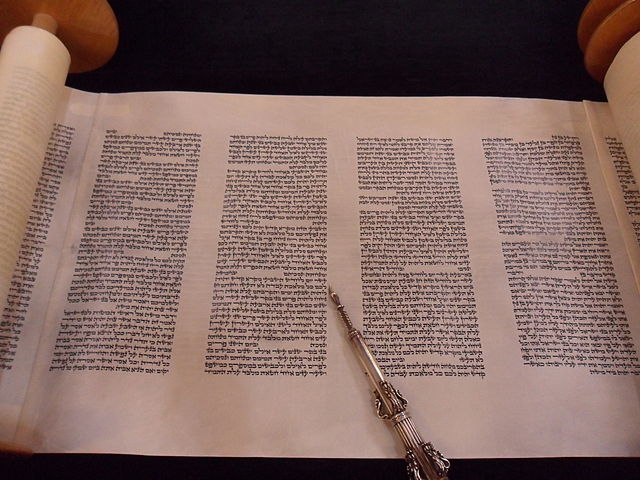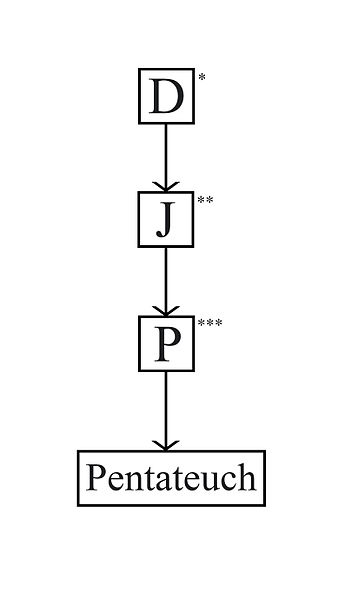A Torah scroll is a handwritten copy of the Torah, meaning the five books of Moses. The Torah scroll is mainly used in the ritual of Torah reading during Jewish prayers. At other times, it is stored in the holiest spot within a synagogue, the Torah ark, which is usually an ornate curtained-off cabinet or section of the synagogue built along the wall that most closely faces Jerusalem, the direction Jews face when praying.
A Sephardic Torah scroll rolled to the first paragraph of the Shema
An Ashkenazi Torah scroll rolled to the Decalogue
Torah cases at Knesset Eliyahoo Synagogue, Mumbai, India
A 200-year-old Yemenite Torah scroll, on gevil, from the Rambam Synagogue in Nahalat Ahim, Jerusalem. The sofer (scribe) was from the Sharabi family.
The Torah is the compilation of the first five books of the Hebrew Bible, namely the books of Genesis, Exodus, Leviticus, Numbers and Deuteronomy. The Torah is known as the Pentateuch or the Five Books of Moses by Christians. It is also known as the Written Torah in Rabbinical Jewish tradition. If meant for liturgic purposes, it takes the form of a Torah scroll. If in bound book form, it is called Chumash, and is usually printed with the rabbinic commentaries.
An opened Torah scroll (Book of Genesis part).
Reading pointers, or yad, to ensure more ordinal reading of the Torah.
An opened Torah scroll (Book of Numbers part), and a reading pointer (yad).
The supplementary hypothesis, one potential successor to the documentary hypothesis.








